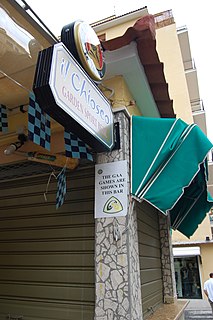 W
WGaelic games are sports played in Ireland under the auspices of the Gaelic Athletic Association (GAA). They include Gaelic football, hurling, Gaelic handball and rounders. Women's versions of hurling and football are also played: camogie, organised by the Camogie Association of Ireland, and ladies' Gaelic football, organised by the Ladies' Gaelic Football Association. While women's versions are not organised by the GAA, they are closely associated with it.
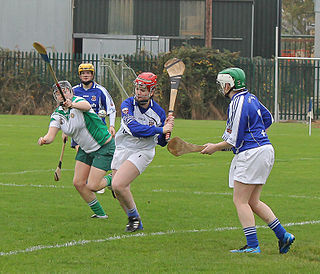 W
WCamogie is an Irish stick-and-ball team sport played by women. Camogie is played by 100,000 women in Ireland and worldwide, largely among Irish communities.
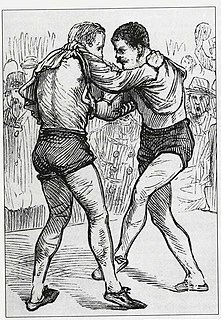 W
WCollar-and-elbow wrestling is a style of jacket wrestling native to Ireland. Historically it has also been practised in regions of the world with large Irish diaspora populations, such as the United States and Australia.
 W
WCycle polo is a team sport, similar to traditional polo, except that bicycles are used instead of horses. There are two versions of the sport: grass and Hardcourt Bike Polo. The hardcourt game saw a sharp spike in interest in the first decade of the 21st century and new teams are sprouting up across the world in China, Canada, Ireland, Switzerland, France, India, Germany, Pakistan, Ukraine, Russia, Malaysia, Sri Lanka, Indonesia, Hungary, Australia, New Zealand, Sweden, England, Scotland, Argentina, Italy, Spain, USA, Poland, Croatia, Slovenia, Lithuania, Nepal, Brazil and Cuba.
 W
WGaelic football, commonly referred to as football, Gaelic or GAA, is an Irish team sport. It is played between two teams of 15 players on a rectangular grass pitch. The objective of the sport is to score by kicking or punching the ball into the other team's goals or between two upright posts above the goals and over a crossbar 2.5 metres (8.2 ft) above the ground.
 W
WGaelic handball is a sport where players hit a ball with a hand or fist against a wall in such a way as to make a shot the opposition cannot return, and that may be played with two (singles) or four players (doubles). The sport, popular in Ireland, is similar to American handball, Welsh handball, fives, Basque pelota, Valencian frontó, and more remotely to racquetball or squash. It is one of the four Gaelic games organised by the Gaelic Athletic Association (GAA). GAA Handball, a subsidiary organisation of the GAA, governs and promotes the sport.
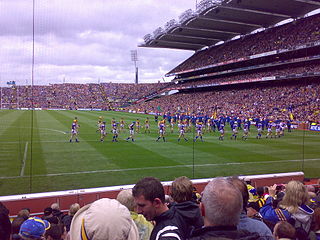 W
WHurling is an outdoor team game of ancient Gaelic Irish origin, played by men. One of Ireland's native Gaelic games, it shares a number of features with Gaelic football, such as the field and goals, the number of players, and much terminology. There is a similar game for women called camogie. It shares a common Gaelic root.
 W
WInternational rules football is a team sport consisting of a hybrid of football codes, which was developed to facilitate international representative matches between Australian rules football players and Gaelic football players.
 W
WLadies' Gaelic football is a women's team sport. It is the women's equivalent of Gaelic football. Ladies' football is organised by the Ladies' Gaelic Football Association. Two teams of 15 players kick or hand-pass a round ball towards goals at each end of a grass pitch. The sport is mainly played in the Republic of Ireland and Northern Ireland, where the two main competitions are the All-Ireland Senior Ladies' Football Championship and the Ladies' National Football League. Both competitions feature teams representing the traditional Gaelic games counties. The 2017 All-Ireland Senior Ladies' Football Championship Final was the best attended women's sports final of 2017. The 2019 final, after the 2019 FIFA Women's World Cup Final, was the second largest attendance at any women's sporting final during 2019. Historically Cork and Kerry have been the sport's most successful counties. Waterford, Monaghan and Mayo have also experienced spells of success. In more recent years, 2017 to 2020, Dublin have been the dominant team.
 W
WPitch and putt is an amateur sport very similar to, and derived from, golf, where the hole length is typically up to 90 metres (100 yd) and just 2-3 clubs are typically used. Invented in Ireland in 1929, and developed through the 1940s, it is now played in dozens of countries and has two world governing bodies.
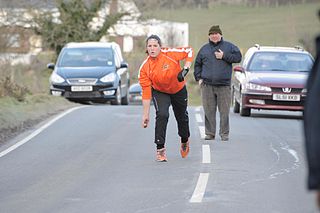 W
WRoad bowling is an Irish sport in which competitors attempt to take the fewest throws to propel a metal ball along a predetermined course of country roads. The sport originated in Ireland and is mainly played in counties Armagh and Cork.
 W
WRounders is a bat-and-ball game played between two teams. Rounders is a striking and fielding team game that involves hitting a small, hard, leather-cased ball with a rounded end wooden, plastic, or metal bat. The players score by running around the four bases on the field.
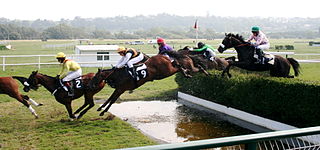 W
WA steeplechase is a distance horse race in which competitors are required to jump diverse fence and ditch obstacles. Steeplechasing is primarily conducted in Ireland, the United Kingdom, Canada, United States, Australia and France. The name is derived from early races in which orientation of the course was by reference to a church steeple, jumping fences and ditches and generally traversing the many intervening obstacles in the countryside.